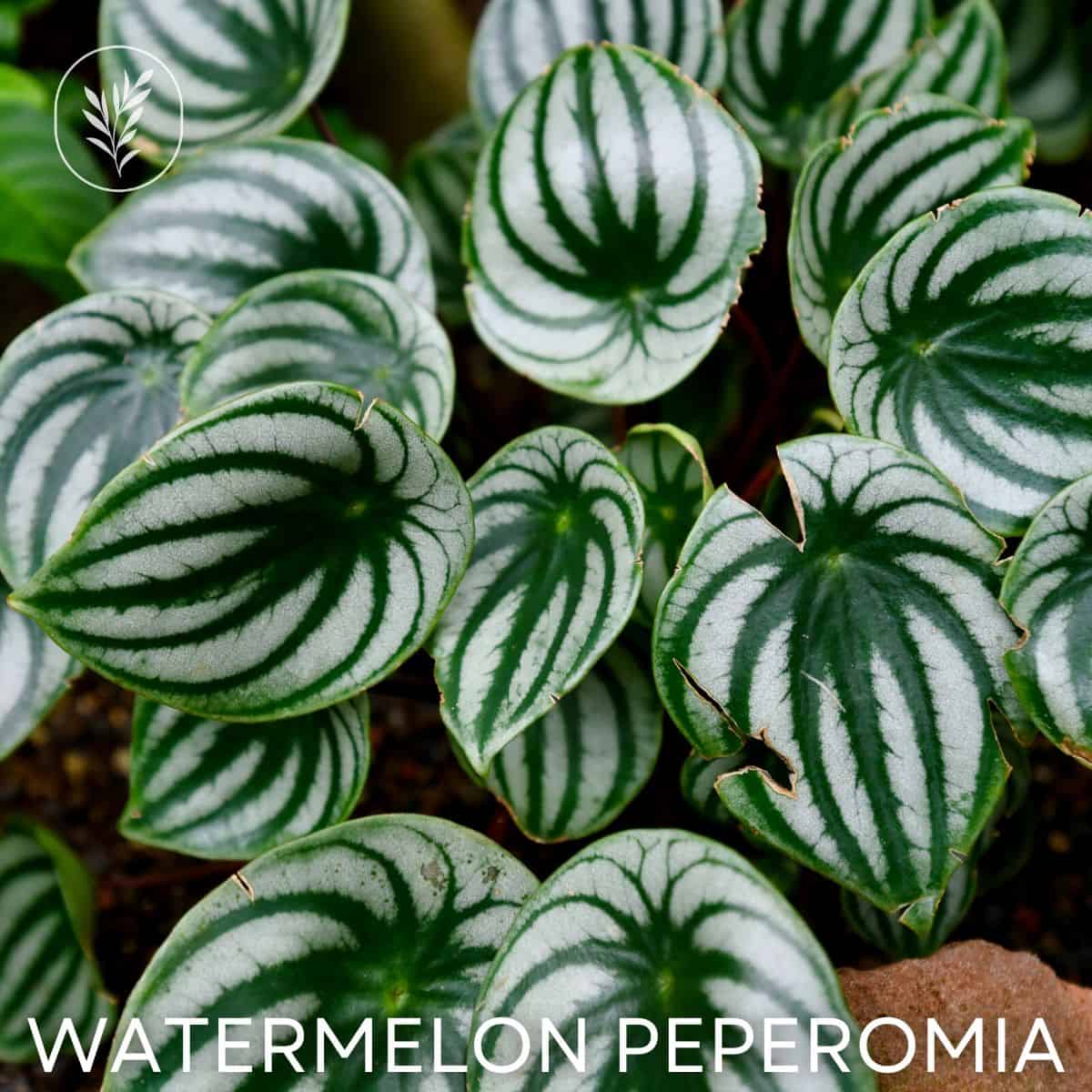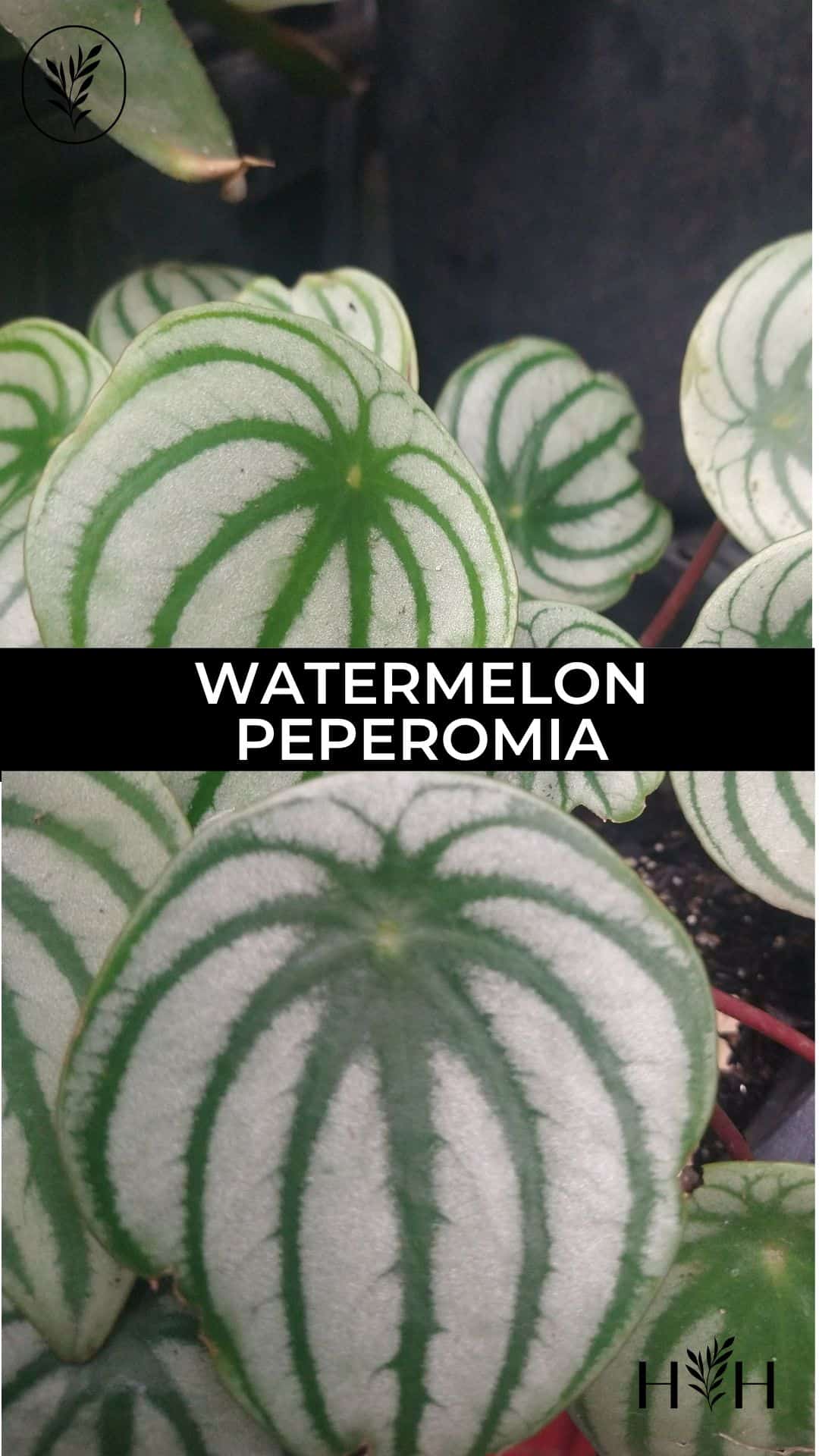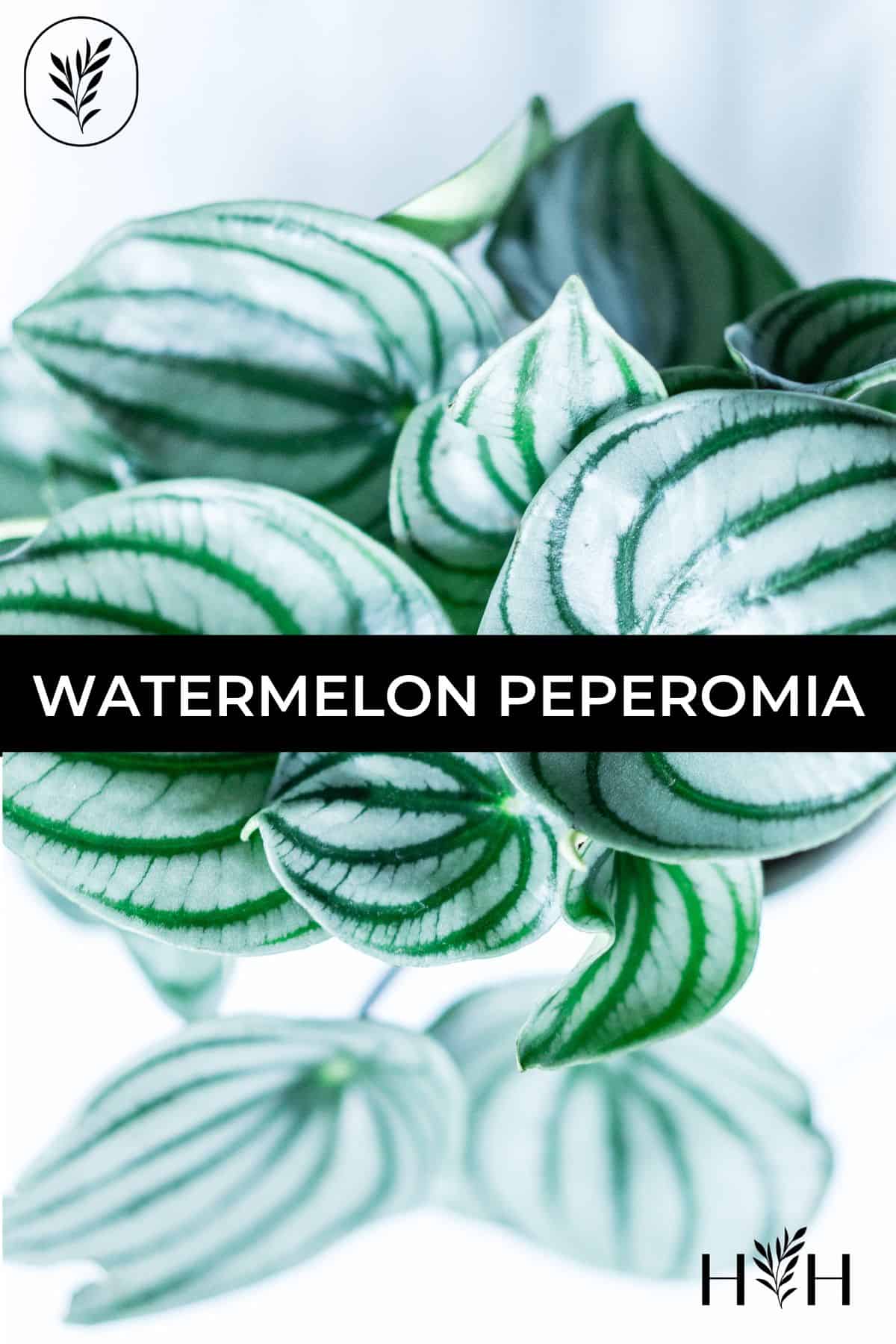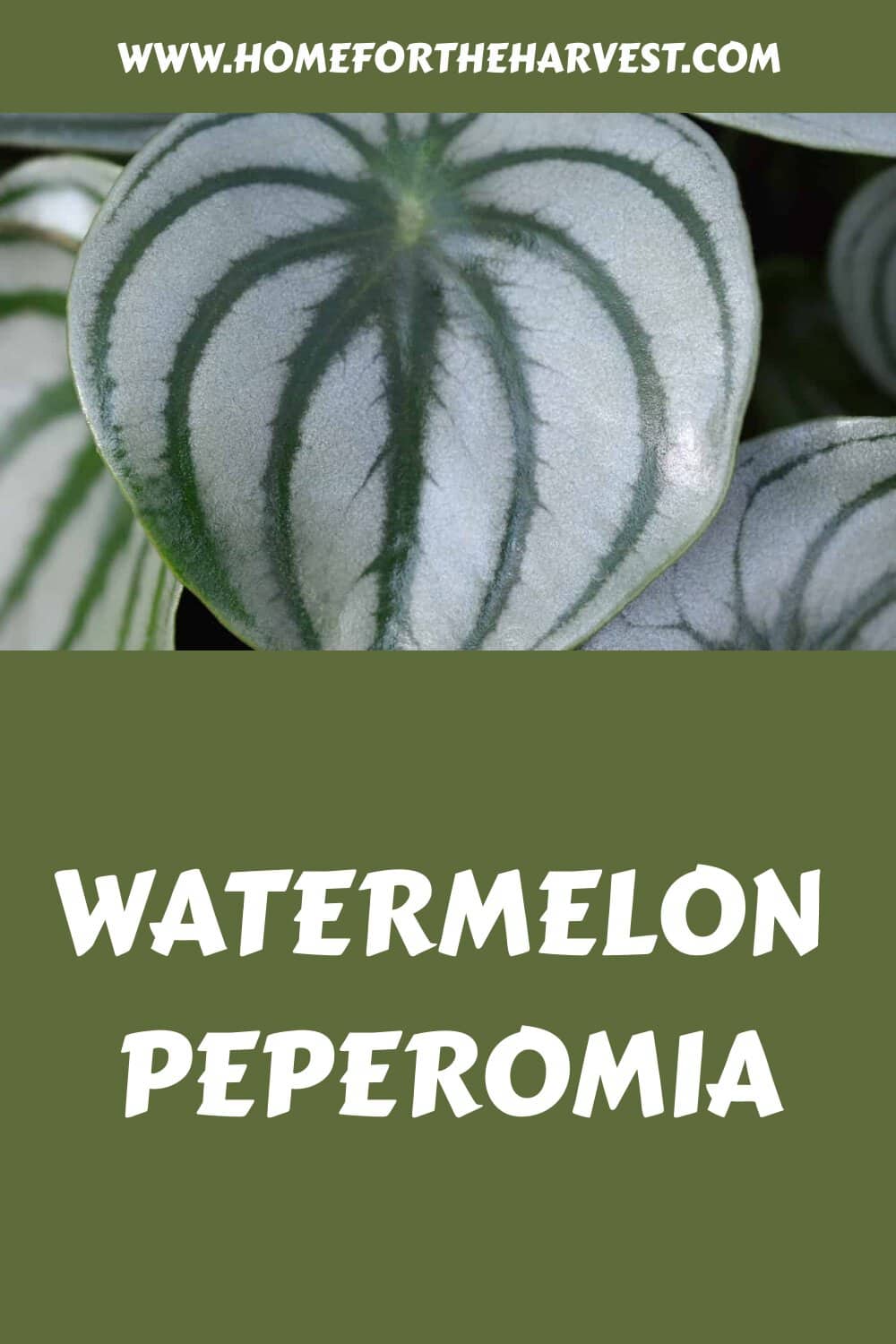There are so many different kinds of house plants that you can add to your home to bring some life and character into every room. Sometimes you don’t know which one to get because they all look wonderful, or maybe you are not familiar with many different house plants. Either way, a great houseplant to display in your home is the watermelon peperomia.
Watermelon peperomia (Peperomia argyreia) is a small tropical native to Brazil that is grown commonly as a houseplant around the world. These cuties are around 6-8 inches tall with round, glossy leaves that have stripes similar to those on a watermelon rind. Plants bloom with tiny green flowers in the summer and stay green indoors all winter long.
The Watermelon peperomia is a beautiful indoor plant that draws attention and gives life to any room. It is easy to care for and it will thrive in nearly any indoor environment. Keep reading so we can explain everything you need to know about this plant.
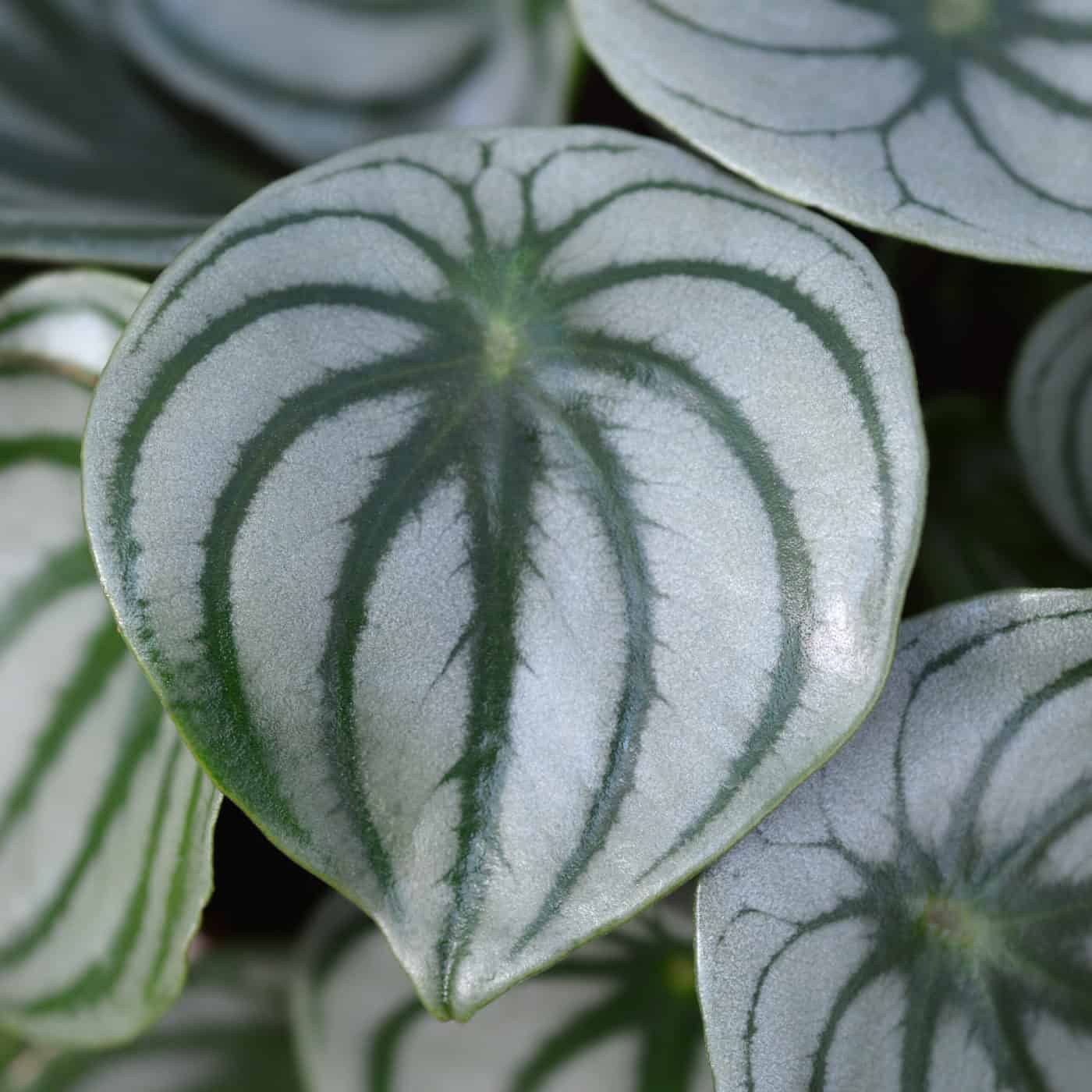
Watermelon Peperomia basics
Watermelon Peperomia (Peperomia argyreia) is a low-growing perennial plant native to the tropics around Brazil, including Ecuador, Venezuela, and Bolivia. Despite being native to warmer countries, it can handle cooler weather (although not below freezing). A Watermelon Peperomia is a very easy plant to care for and they make a great starter plant for beginners. Watermelon Peperomia is one of the more popular species of the Peperomia plant.
Watermelon Peperomia is officially given the botanical name Peperomia argyreia. The word “Argyreia” means “silvery” in Latin. This is because this plant’s leaves have stripes that are glossy and a bit metallic-looking. The common name Watermelon comes from the striped appearance of the leaves. In a way, they resemble the striped ring of a watermelon. Contrary to the name, though, the Watermelon Peperomia is not closely related to real Watermelon plants at all. Instead, this plant is one species of Radiator Plant.
Watermelon peperomia has a striking appearance that anyone would be proud to show off. The plant is short, about 6 to 8 inches tall. It has short stems that are red, which contrast beautifully with the different shades of green in the leaves. The leaves are round and big for the size of the plant. They are glossy and feature silvery stripes. In the summer, peperomia has little green flower spikes that bloom. They are not showy, but they can add some visual interest to the plant.
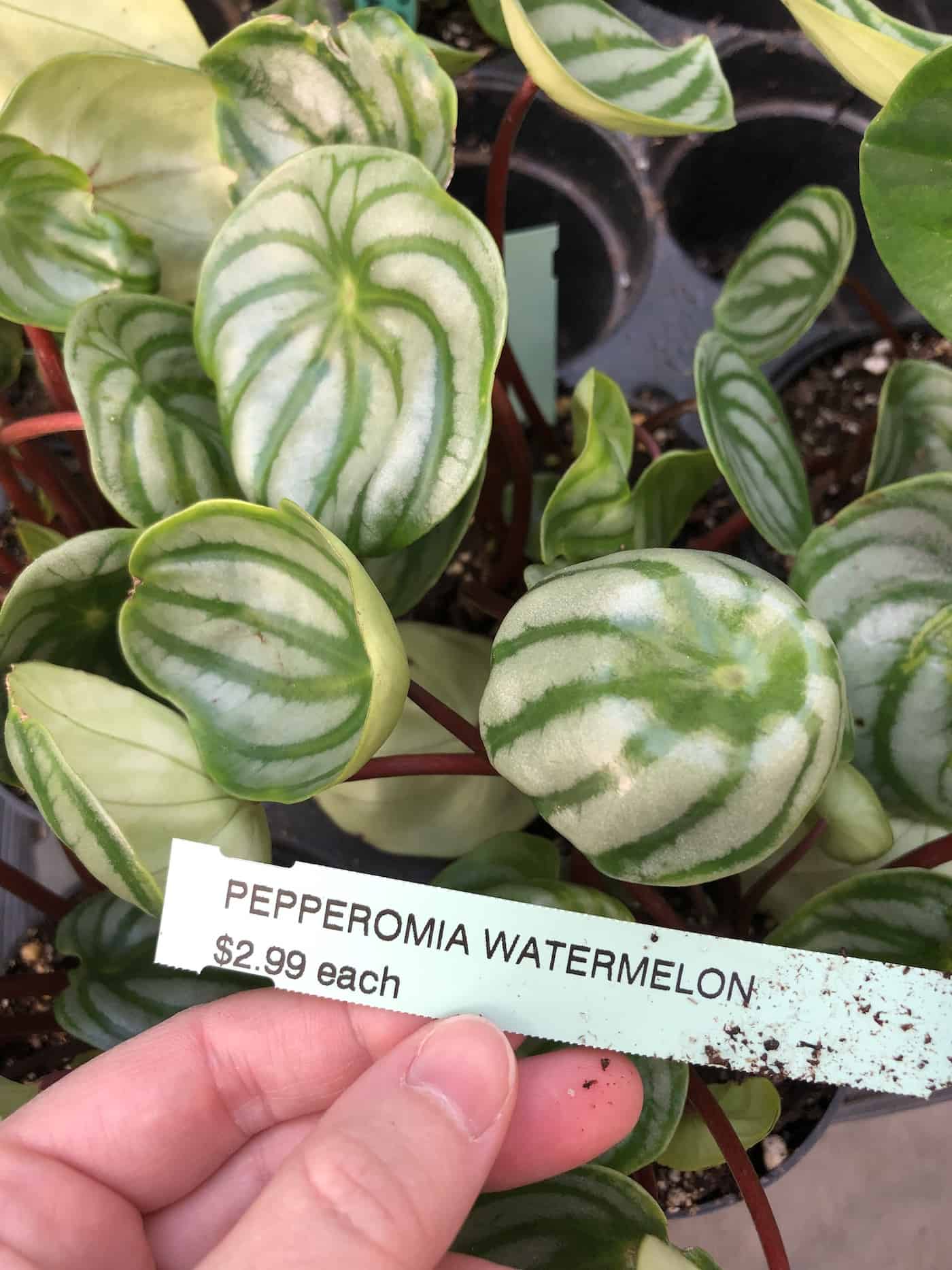
How to care for Watermelon Peperomia
Watermelon Peperomia is one of the easiest, most forgiving houseplants to care for. We will cover all of the factors of keeping this plant in your home, like how much light to give, how often to water, what kind of soil it needs, what kind of planter would be best, and the best kind of fertilizer for it.
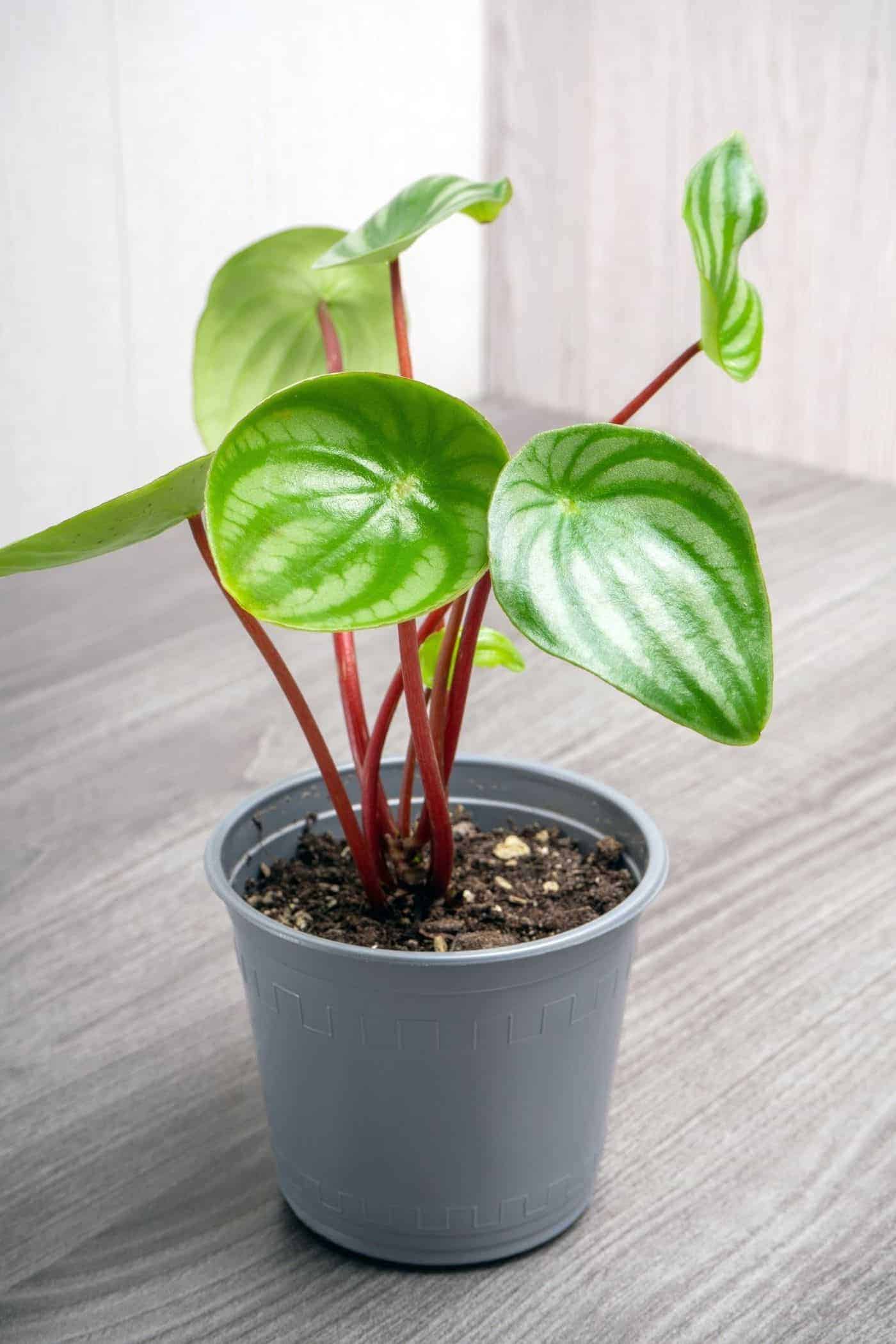
Light requirements for growing Watermelon Peperomia
Watermelon Peperomia grows best with bright, indirect light, but is somewhat tolerant of low-light conditions. This plant should be kept in a bright room but you should make sure that it is out of direct sunlight. When in the forests of South America, it thrives under the canopy in the shade. Placing it on the far end of a room with a south, west, or east-facing window is best.
Watermelon Peperomia grown indoors often benefit from artificial light, especially if they are looking at all droopy or otherwise unenergetic. Use a simple LED plant lightbulb or group the plant with other houseplants under a plate-style grow light.
Watering Watermelon Peperomia plants
Watermelon Peperomia does not need to be watered all of the time. That being said, you should watch it to make sure that it is getting enough water without being too wet. In the summer, spring, and early fall, water the Peperomia thoroughly when the soil is dry to the touch at the top. In the winter and late fall, it should be watered much less because it will be in a more dormant state.
Best potting soil for Watermelon Peperomia
Watermelon Peperomia thrives best in light, well-drained potting soil. This is so water does not just sit in the soil around the roots. If water cannot drain, then rot is likely to happen and your peperomia might wilt and die. To make a simple well-draining potting soil, mix 2 parts peat with 1 part perlite. This will help the water drain while still giving it the peat that it needs.
Repotting Watermelon Peperomia in a new planter pot
Watermelon Peperomia does not need to be re-potted very often. It grows in a compact way and can easily thrive that way.
Re-pot this plant in a medium-sized container. Plants do not grow too big and this way they can be displayed in a wider variety of spaces. About 3 years after planting, you should move it to a slightly bigger pot, but otherwise, replace the topsoil every spring to keep it fresh.
Fertilizer for Watermelon Peperomia
The best fertilizer to use for any plant is a sustainably-produced organic fertilizer. This will ensure that no harmful chemicals are introduced to the plant that could damage it over time.
Lightly fertilize your Watermelon Peperomia according to package directions during the spring or summer. This will keep it healthy while avoiding over-fertilization which can affect the leaf and stem coloration.
Humidity levels for Watermelon Peperomia
Like many other South American plants, the Watermelon Peperomia enjoys humid air. Pebble trays are unlikely to be effective, and grouping plants together may not provide enough humidity for these plants to truly thrive.
A more effective solution is to use a space humidifier. If your home’s HVAC system doesn’t have a built-in humidifier, it’s easy to use a stand-alone unit.
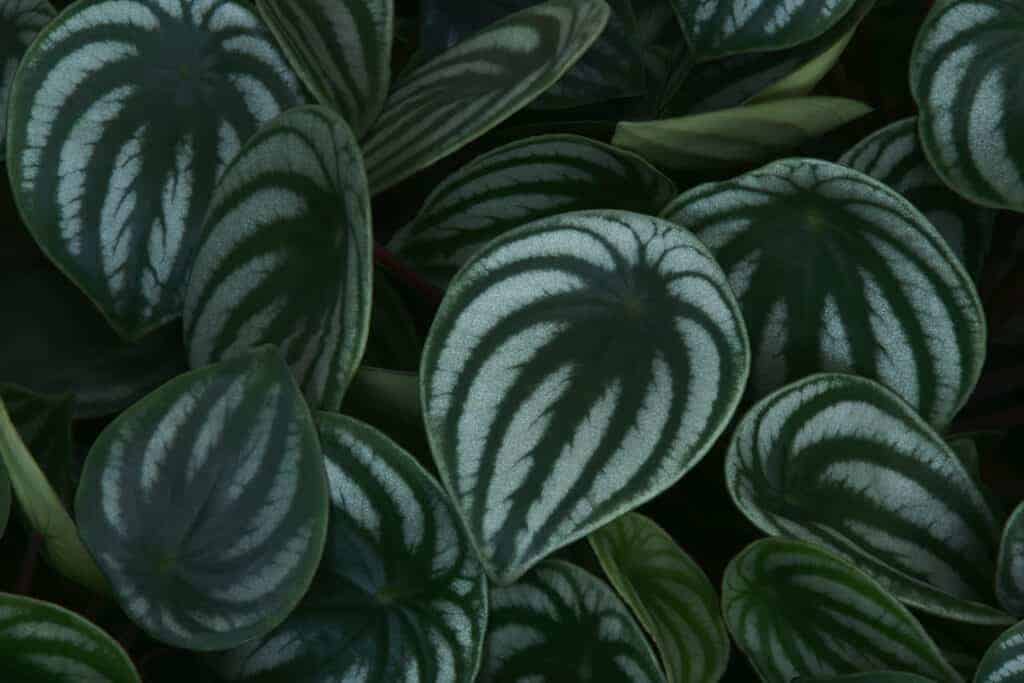
Watermelon Peperomia propagation
The last thing you need to know about Watermelon Peperomia is that it is easily propagated. This makes it super easy to plant new watermelon peperomias if you want more in your home. To propagate this plant, cut off a leaf with a length of stem still attached. Apply a rooting hormone to the cut and then plant in an appropriately sized pot or planter with warm, moist soil.
Ensure the stem is about 1 inch deep in the soil, and the plant should grow from there. Keep it watered lightly and keep it away from direct sunlight. When propagated, the watermelon peperomia will take 6-8 weeks to grow and really take root. Then you’ll be able to share Watermelon Peperomia with a plant-loving friend!


